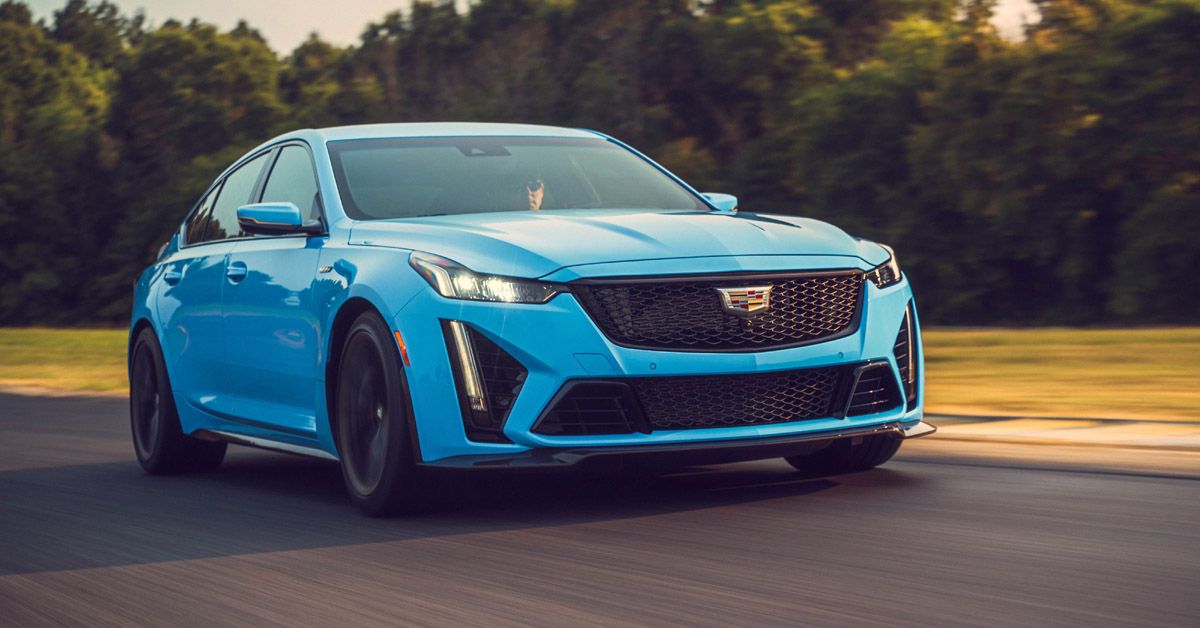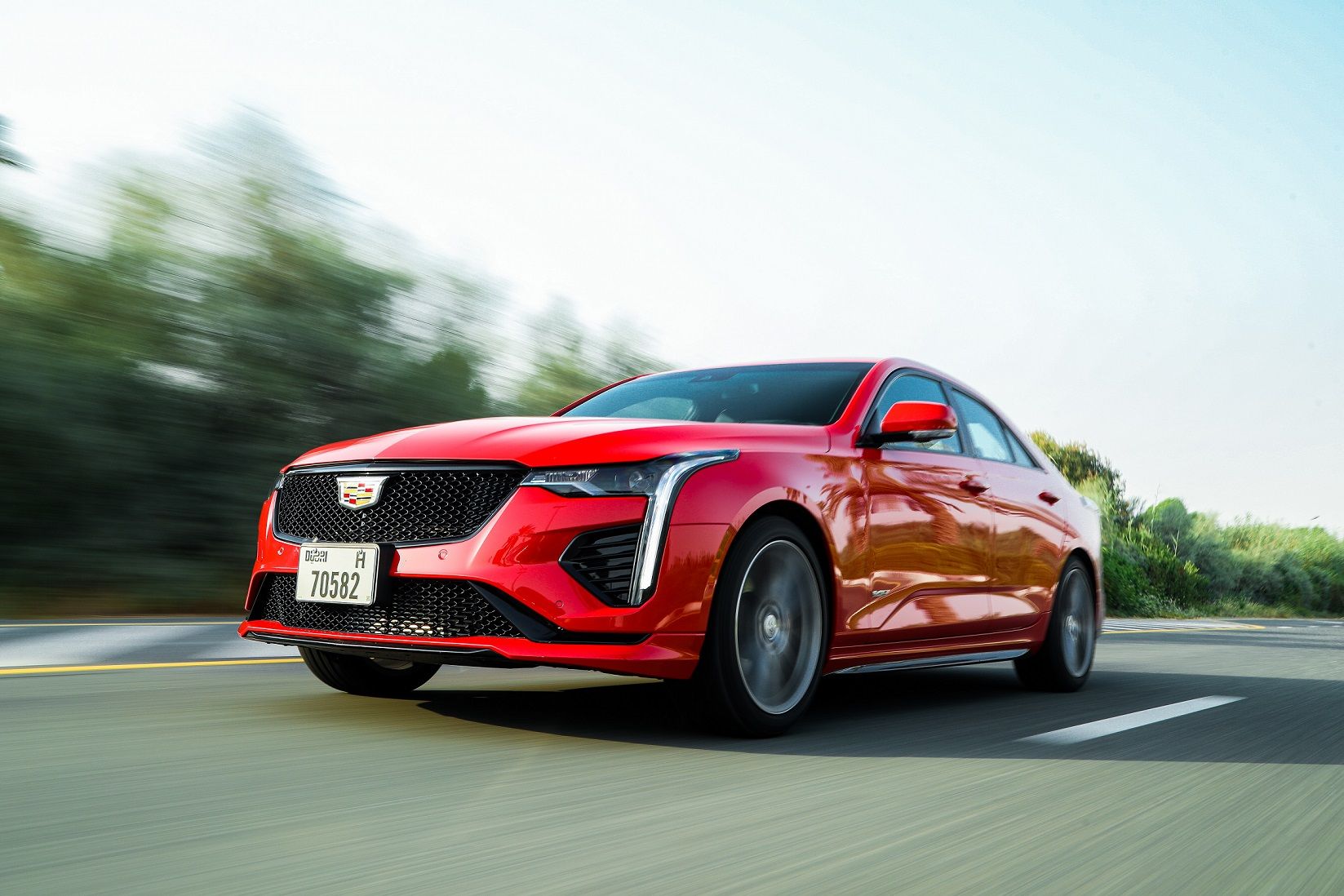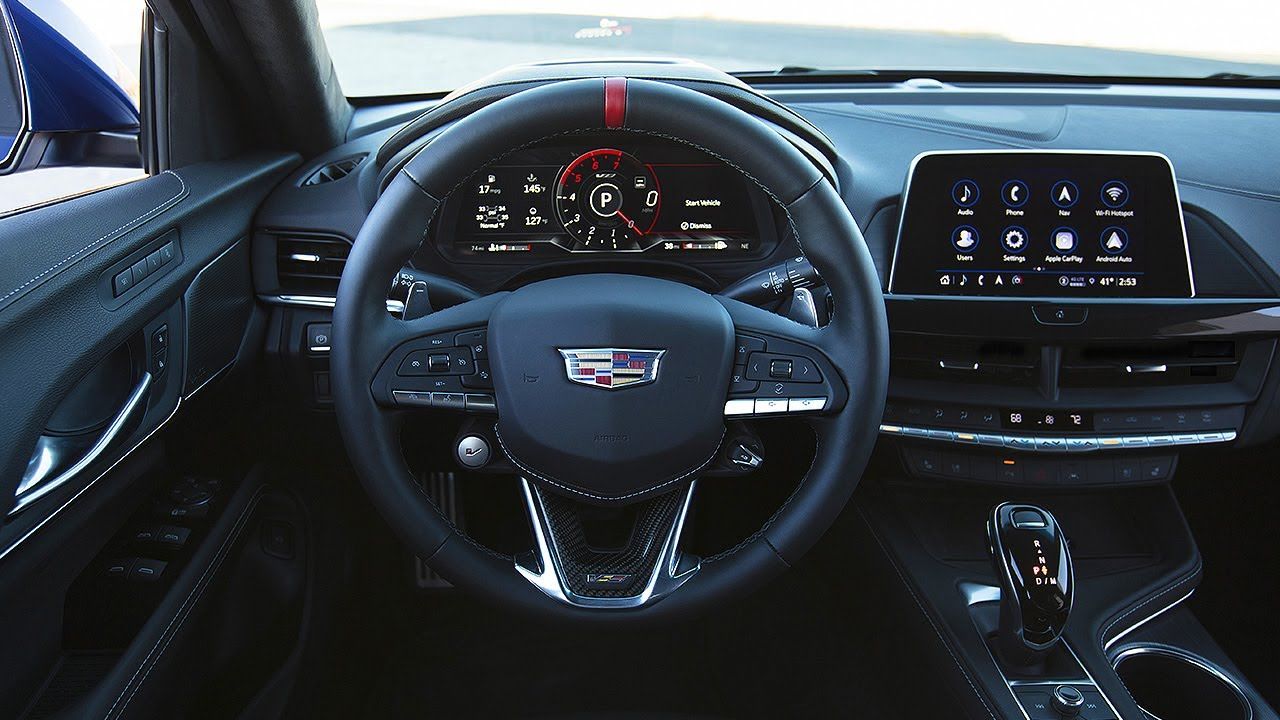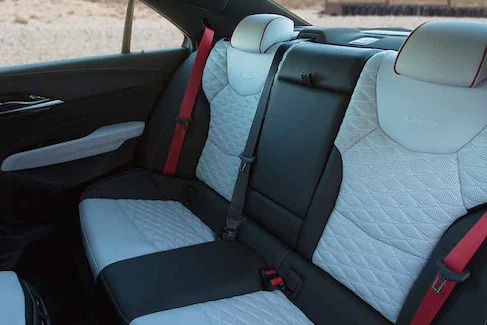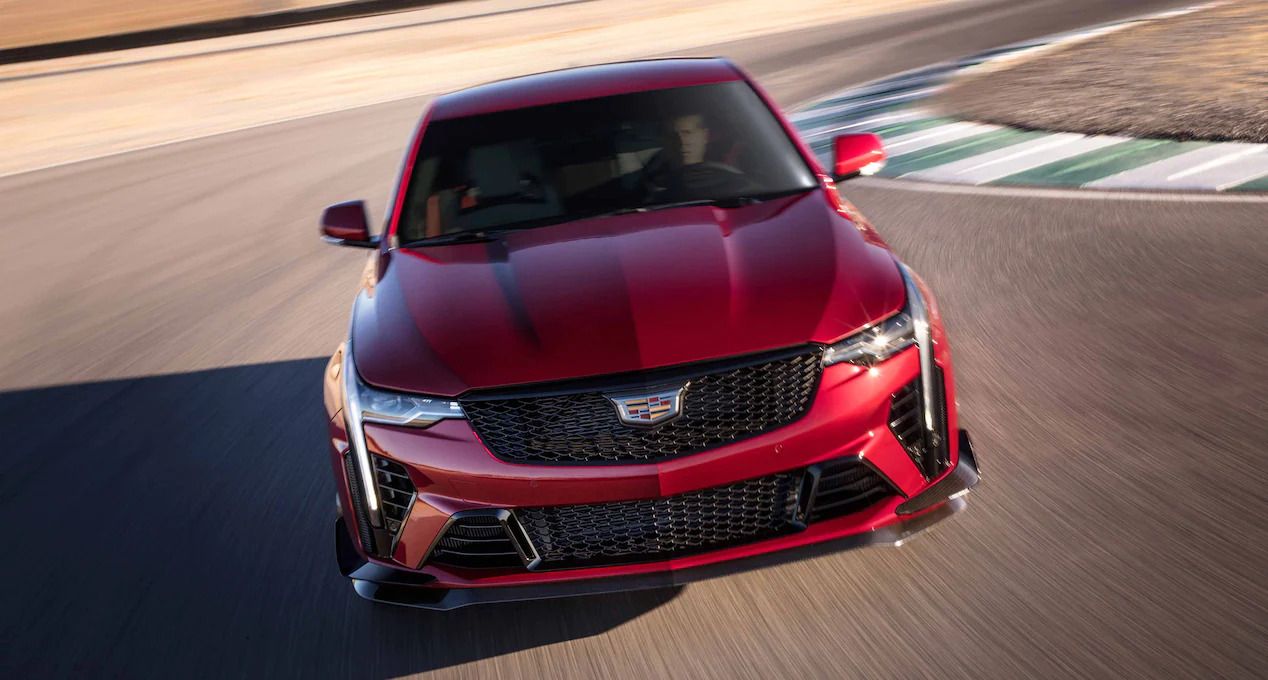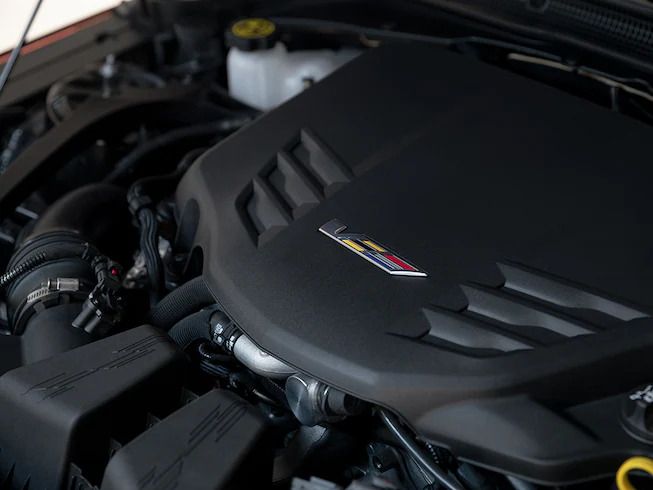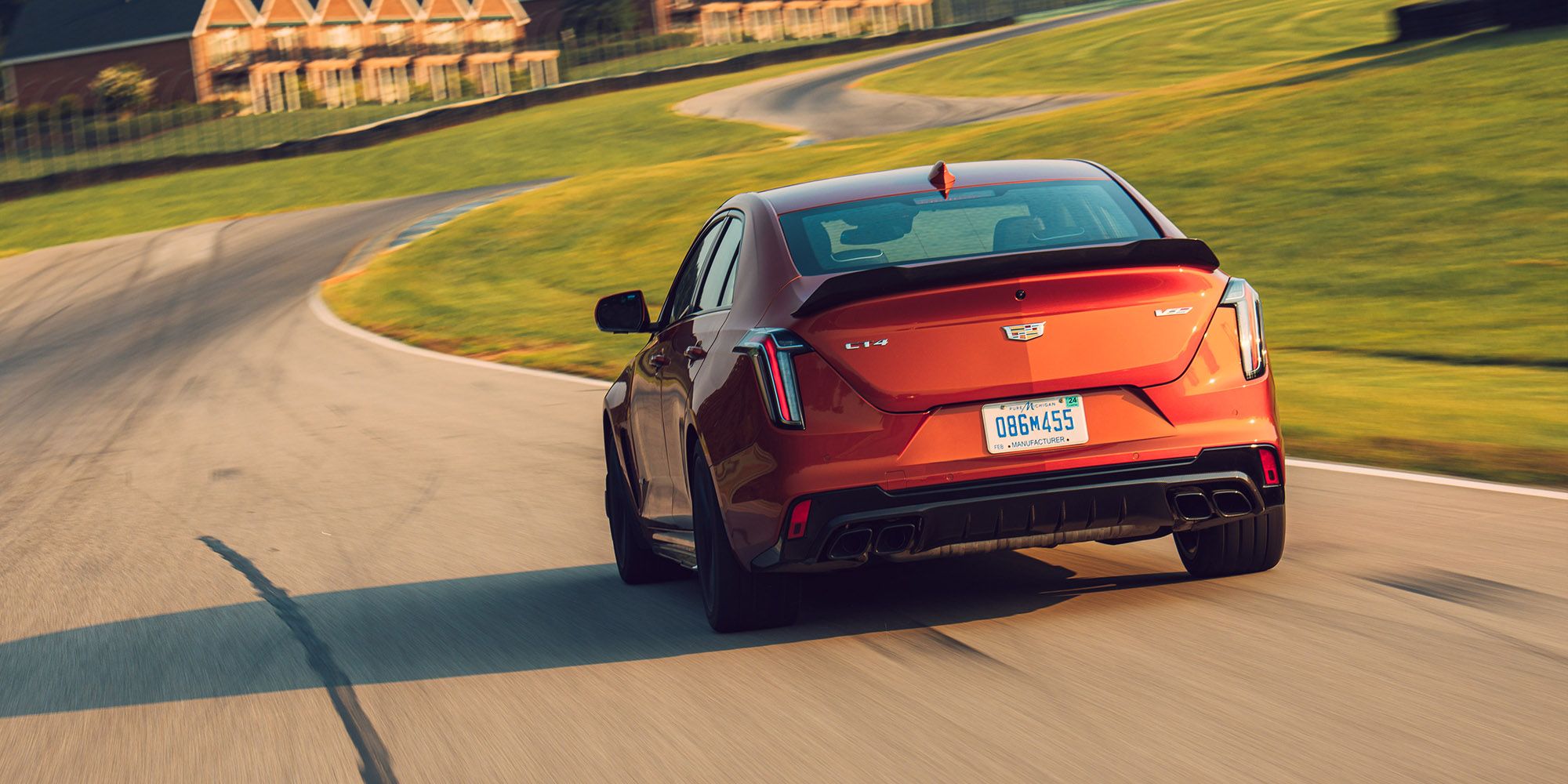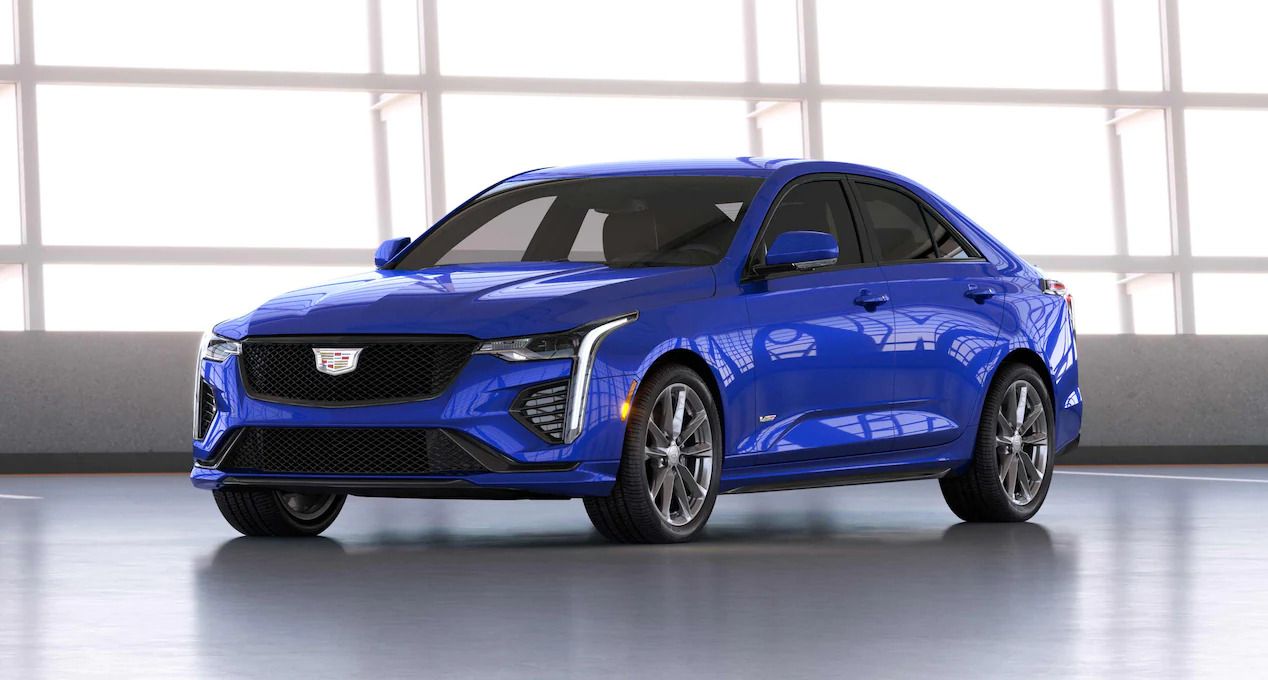With the recent unveiling of Cadillac’s fourth generation V-series, we see Detroit’s luxury automaker shift away from their “Art & Science” approach, and into a new era of design language. If the past two years have been any indication, then it would seem Cadillac has returned to its ethos of the original V-series; performance variant, luxury sedans that takes aim squarely at the German institutions: BMW’s M3, Mercedes-Benz’s C63 AMG, and Audi’s S3.
2022 sees the introduction of the new CT4-V with its turbocharged inline-4 and its muscular, twin turbo, V6 brother, the CT4-V Blackwing. Let’s see how they compare with the rest of their compact performance luxury sedan competition.
The Cadillac CT4-V's Styling And Design
For the majority of its existence, Cadillac has focused on the driver’s comfortability. Essentially cornering the land-yacht market, featuring massive size, unique proportions, and unabashed luxury components. The company was so synonymous with creating luxury vehicles, it even inspired the colloquial saying, “the Cadillac of...” when trying to convey the quality of a certain product.
The CT4-V is undoubtedly inspired by the company’s “luxury” ethos, but since the new millennia, Cadillac has shifted focus to taking their ultra-premium cars, and stuffing it with the biggest engine they have, slapping the “V” badge around the car, and changing up the body kit, in a direct attempt to take on Germany’s finest.
The new CT4-V isn’t the subtlest when compared to the rest of the segment, but it’s far from the most, shall we say, peculiar. That description is reserved for BMW’s M3 new “bucktooth” grill, no longer serving up its iconic “kidney” design. Unfortunately, BMW’s grill isn’t meant for more functional cooling capabilities, it's been said the redesigned grill allows for more freedom when it comes to placing autonomous sensors, because that’s a thing now.
Technology Of The CT4-V
As we begin to uncover the technology in the CT4-V and its competitors, we discover Cadillac has implemented more race-worthy technology, directly in line with the V-series philosophy.
The first piece of technology separating the CT4-V from the competition is its, Integrated Performance Data Recorder. It allows you to record and study your driving habits through its use of: real-time video and in-cabin audio and performance data. The recorder also allows you to track engine speed, braking force, and steering wheel angle, amongst other things. Cadillac has even made it possible for this information to be played back through its 8” digital screen. It’s even compatible with the Cosworth Toolbox, and application focused on analyzing driving performance, and where the driver can improve.
The technology featured in the CT4-V appears to be light years ahead of its competition, with the M3, S3, and C643 AMG, highlighting archaic features such as dual-climate control, power seats, and Bluetooth connectivity. The AMG doesn’t even offer interested parties a dedicated section to technology when browsing the C63 on the manufacturer’s website, just a “multimedia” tab with a few key features. Although, one could argue that Cadillac is forced to push the boundaries of technology in order to entice loyal German buyers away from their respective brands; brands that possess the benefit of history of performance on their side.
Interior
Which leads us to the interior styling offered by the CT4-V and its German competitors. In an effort to stick with its race-inspired attitude, Cadillac has introduced a number of upgrades, including: alloy paddle shifters, a carbon fiber console trim, bolstered front seats, and an ergonomic steering wheel and armrests. Highest trim options include a beautiful leather seating surface featuring faceted quilting and perforations.
But outside the feel of comfort, there isn’t a lot that separates these compact, luxury sedans from one another. They all feature premium materials, bold accenting, and a plethora of badges to remind you what you’re paying for. Cargo and seating dimension differences are virtually indistinguishable from one another, and if we’re being honest, passenger room isn’t the focal point of performance inspired luxury sedans. Are they all capable of seating five? Of course. But this particular range of cars aren’t meant for family hauling, they’re meant for the affluent, business executive looking to enjoy their commute, with the occasional track day, if they so desired.
Fuel Efficiency
It seems like each day automakers are introducing new engines that are not only capable of producing major performance figures, but also practical in their fuel consumption. The engineering can be something to marvel at, now that they’ve virtually eliminated the need to choose between a powerful, or efficient car.
Generally, the automotive industry has shifted from building naturally aspirated engines with higher displacement, and instead have opted for more fuel-efficient, forced induction with a smaller footprint. Cadillac’s turbocharged inline-4 produces a respectable 29 MPG on the highway, and 20 mpg in the city, but is once again bested by Europe. The Audi’s I4 engine is EPA-rated to produce 32 mpg on the highway, and 23 in the city, but it isn’t hard to imagine, seeing how the VW group consistently produce some of the most fuel-efficient cars for each of their market segment.
The largest engine featured in this article is the AMG V8 Biturbo, and it still manages to squeeze out 26 mpg on the highway, and 17 mpg in the city, an admirable amount when considering performance cars of previous generations were lucky to see north of 15 mpg. BMW brings up the rear with its rather thirsty, I6 engine, seeing 23 mpg on the highway, and 17 in the city.
Power Figures
The major focal point of the CT4-V is of course, its 2.7-liter dual-volute turbocharged inline-4 engine. GM debuted the engine in the 2018 Chevrolet Silverado and although it was specifically designed for truck applications, Cadillac elected it to be the heart and soul of the CT4-V. Mated to a ten-speed automatic transmission, the I4 is capable of putting down 325-hp, with 380 lb-ft of torque, and can go from a stand-still to 60 mph in 4.8 seconds. Cadillac also recorded a top-speed of 156 mph through its testing on the racetrack.
When compared to its counterparts, it becomes clear why the Cadillac was forced to overcompensate through its luxury styling, and impressive technology. Amongst the M3, and C63 AMG, the CT4-V is left gasping for air. The bimmer’s 3.0L, twin-turbo inline-6, S58 engine puts down a blistering 473-hp with 443 lb-ft of torque.
MB’s handcrafted 4.0L V8 Biturbo comes in just behind BMW, at 469hp with 476 lb-ft of torque and a 0-60 mph time of 3.9 seconds. Objectively, it also features the best sounds, like all V8s. Audi’s 2.0L turbocharged TFSI I4 engine ends up being the only model bested by Cadillac. It produces 306-hp, 295 lb-ft of torque, with a 0-60 time of 4.5 seconds, and a top speed of 155 mph.
Performance Variants
In another bid to dethrone the Germans’ stable of thoroughbreds, Cadillac has also introduced a hyper-performance inspired version of the CT4-V, dubbed the Blackwing. The Blackwing takes aim directly at BMW’s M3 competition, Benz’s C63 AMG S, and Audi’s RS4. Although the Blackwing is considered the CT4-V’s ultra-performance model, and when compared to its German counterpart, you can’t help but notice the Blackwing is putting up numbers more in line with the entry level M and AMG.
The CT4-V Blackwing is powered by a Cadillac exclusive, twin-turbo 3.6-liter V6, LF4 engine, mated to a six-speed manual gearbox. Previously used in the now defunct, ATS-V, the LF4 is capable of 472-hp with 445 lb-ft of torque. The Blackwing sees the CT4-V’s 0-60 mph and ups its ante from 4.8 to 3.9 seconds, while topping out at more than 189 mph. These figures are good enough to keep Cadillac from coming in last place, a place reserved for the RS3. Audi’s highest performance A3 rounds out the competition, producing 401-hp, 369 lb-ft of torque through its 2.5-liter 5-cylinder turbocharged engine.
However, MB and BMW steal the show, both producing 503-hp, which is more impressive when you realize BMW is achieving the same amount as the AMG, with two fewer cylinders.
Pricing Of The CT4-V
Now that we’ve identified the many facets of the CT4-V and its compact, luxury competitors, we discuss the deciding factor between this market segment, the cost.
In what could be Cadillac’s saving grace, its modest $45,895 MSRP is the lowest amongst the four cars in question, while its performance enhanced sibling, Blackwing, sees a starting price of about $59,000. The Audi is much more competitive, pricing wise, than its BMW and MB countrymen. The S3 starts just under $45,00, and while the RS3 still hasn’t announced its official pricing, many experts see a starting price of close to $60,000.
The standard M3 begins at $70,100, and the Competition sees an MSRP of $73,000, which in BMW terms is a steal for the added performance between the two. It comes as no surprise that the C63 AMG is awfully similar in pricing to the BMW, starting at just under $69,000, with the AMG S sporting a price tag just over $76,000.
At the end of the day, it could be argued (quite persuasively as well) that for the combination of performance, amenities, efficiency, and price; the CT4-V and Blackwing can not only hold its own with its German competition, but it'll cost you a lot less in doing so.

